Creating Attractive and Effective Connections (Part Two)
This case study expands upon Creating Attractive and Effective Connections (Part One) by looking at an additional example of how to consider the quality and potential impact of connections across a development – this time exploring where a connection has been provided, but where design doesn’t maximise its use.
Here, a residential development is positioned to the North of a public open space and recreational facilities, with retail premises situated further south in the commercial area and an additional employment area to the South-East (see image A). The red arrows shown in image represent the pedestrian connection.
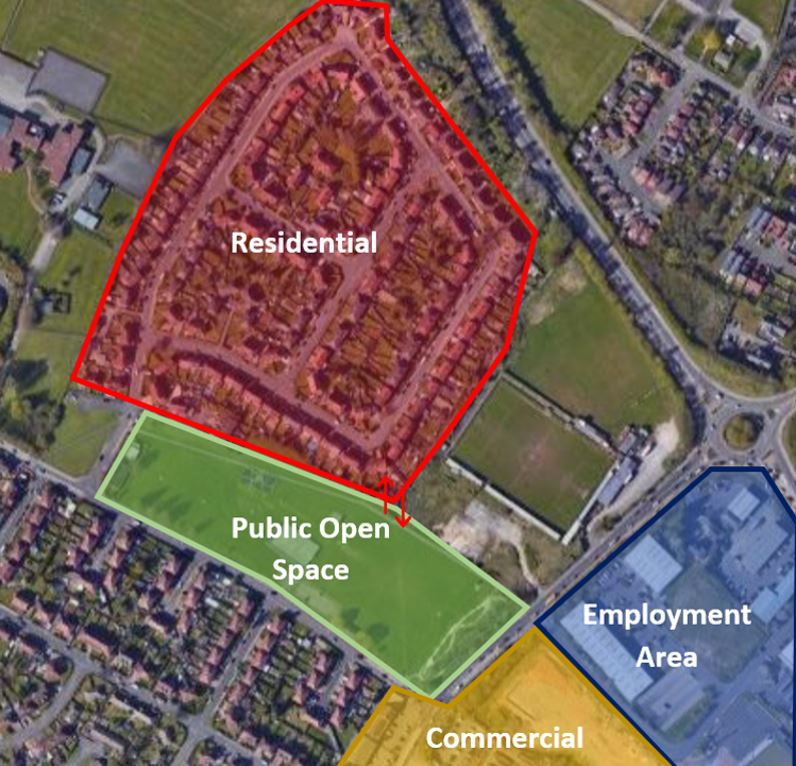
Image A – mixed use development.
By having the connection present between the residential area and the other zones shown, there is an opportunity to encourage people to utilise active travel modes to move between the local community – increasing physical activity (supporting physical and mental health), whilst reducing environmental impact.
Crucial to maximising the benefits of this connection is ensuring that the design provides a sense of safety, as well as a direct route from A to B for those choosing to move on foot, cycle etc. An image of this connection is provided below (images B, C and D).
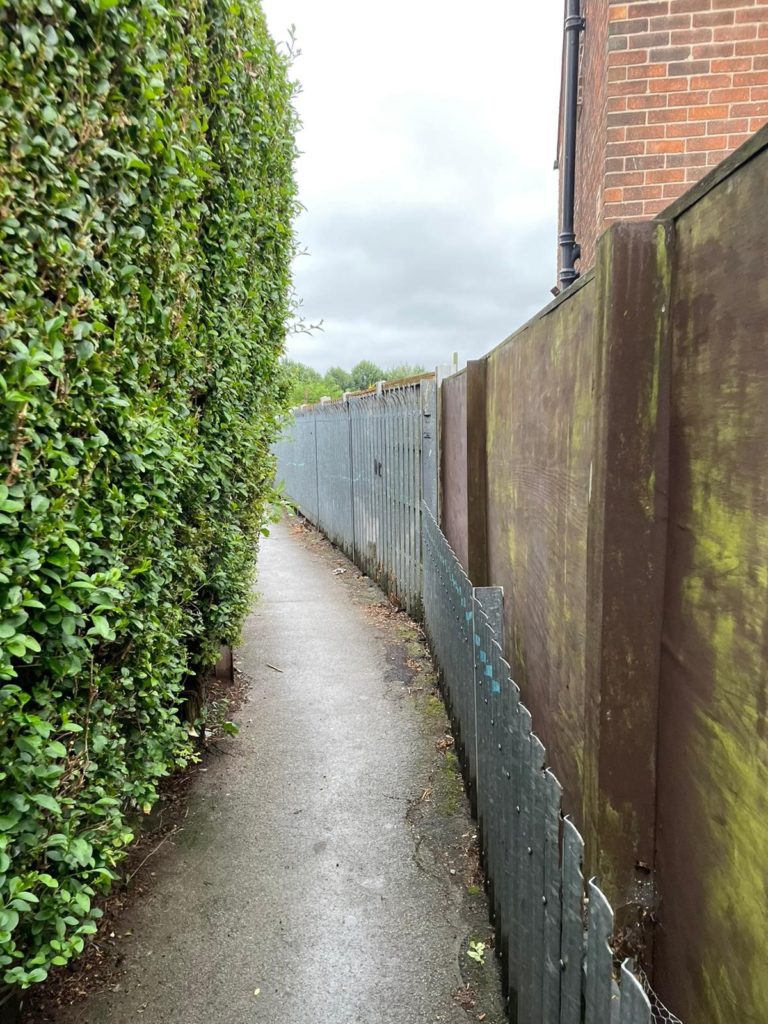 Image B – connection entrance |
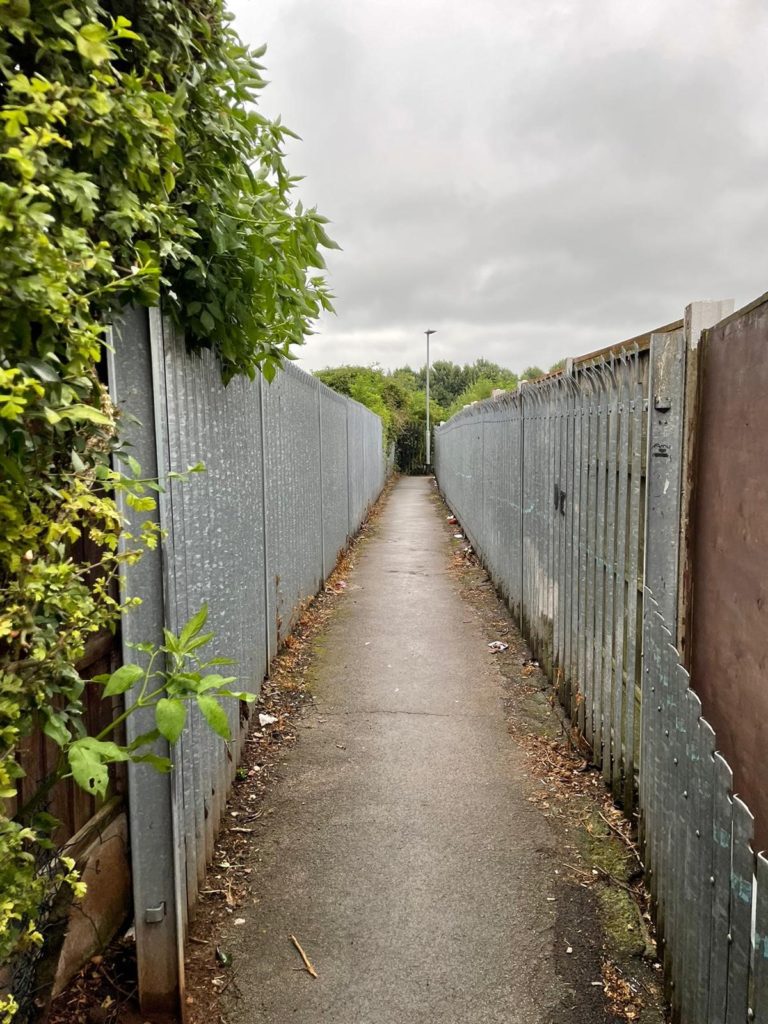 Image C – mid-point of the route. |
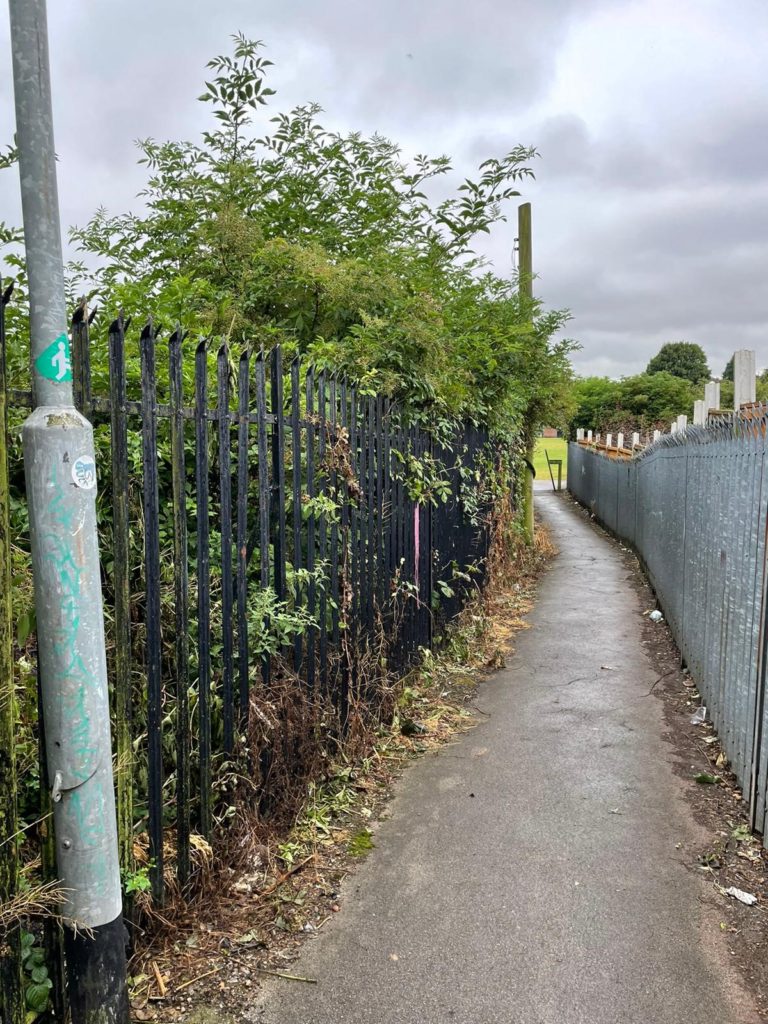 Image D – approach to the exit. |
This connection is often avoided by residents due to the lack of natural surveillance (the adjacent dwellings turn their back to this route), high fences, blind corners and limited lighting in hours of darkness. This combination presents a feeling of vulnerability, resulting in alternative travel choices being made; either active travel via a longer route, or mode shift to a private vehicle.
Images E and F provide an example of the routes taken between a dwelling in the residential area and the open space, commercial and employment areas. In image E, the route using the pedestrian connection is used whilst in image F an alternative route is used avoiding this connection.
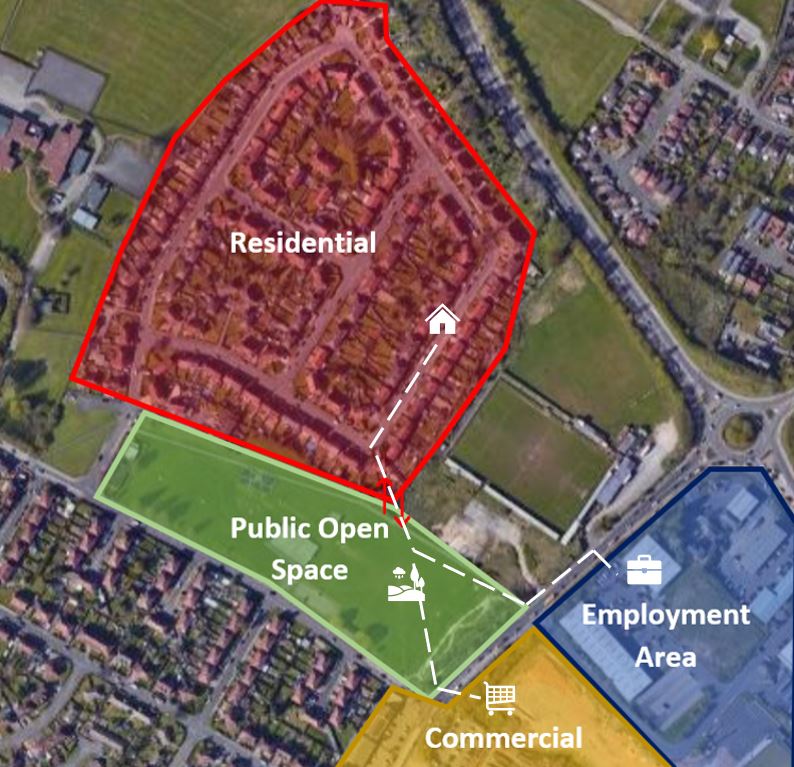 Image E – direct travel routes. |
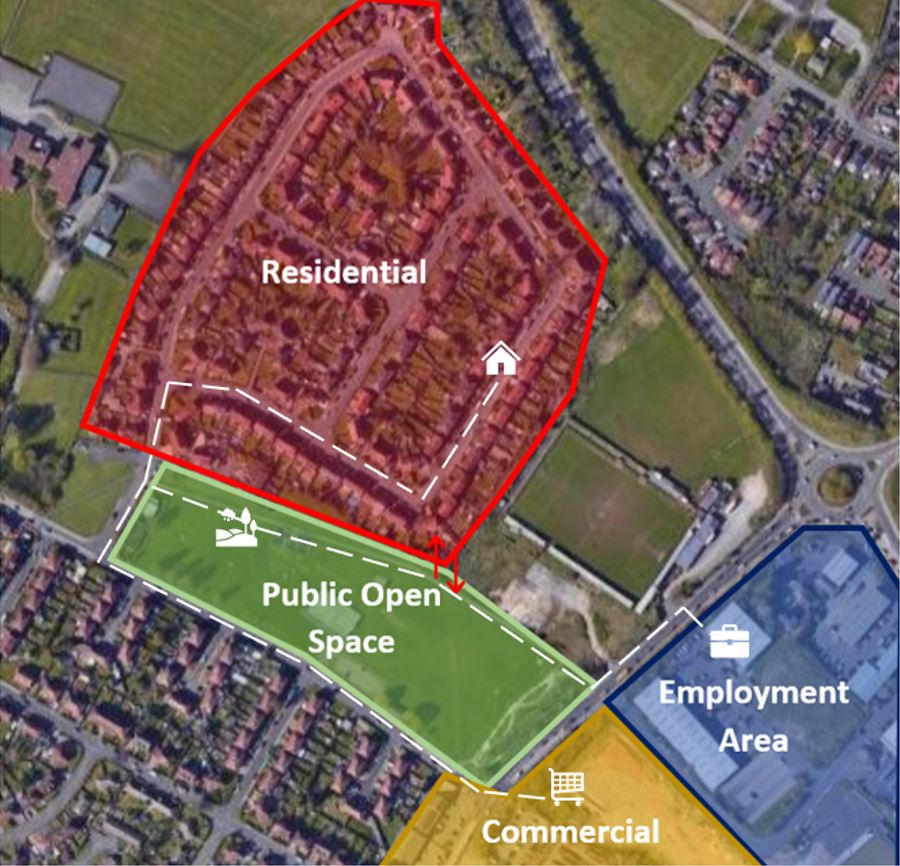 Image F – avoiding the shortest route |
It is immediately evident that avoiding the pedestrian walkway significantly increases the distance between the home and other areas.
- Travelling from home to the open space increases from 200 metres to 500 metres.
- Visiting the supermarket and other retail premises increases the journey from 350 metres to 775 metres.
- Travelling to the employment area becomes a 835 metre journey, rather than 380 metres.
The impact of such increases in travel distances (and subsequently journey times) is a nudge toward other quick, more efficient forms of travel such as the private vehicle. It is also worth noting that this inconvenience is amplified for longer journeys beyond the area shown in the images – and that the cumulative effect of multiple poor connections across a longer journey will further inconvenience people and contribute toward low levels of active travel.
Improving Connectivity
CONTENT AWAITING DEVELOPMENT
